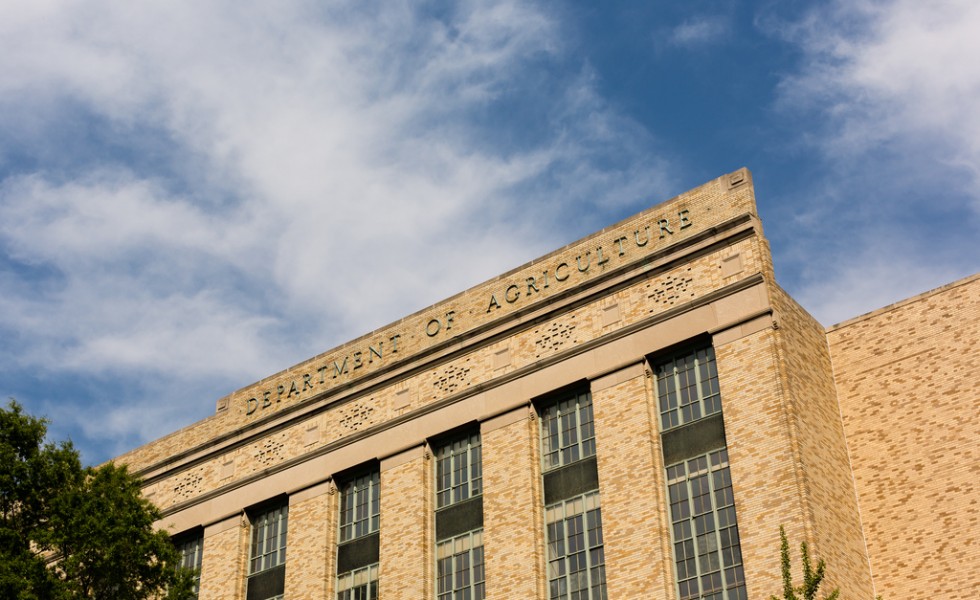Hocus pocus and–poof–taxpayers pay for more crop insurance
Posted on August 2, 2024

Farm and Food File for the week beginning Sunday, June 16, 2024
A longstanding complaint here is the utter incomprehensibility of federal milk pricing policy. For years we’ve joked (mostly through tears) that only four people in the world understand its complexity and, worse, not one of them is a dairy farmer.
As if to prove our point, the U.S. Department of Agriculture (USDA) recently completed a review of its convoluted system–the “first comprehensive revision” since 2000–at its “Federal Milk Marketing Order National Hearings.” The hearings ran from Aug. 23, 2023 to Jan. 30, 2024.
That’s right, five months, and it’s a safe bet that now only three people in the world understand federal milk pricing policy.
The confusing, arcane model–one designed by processors to favor processors, not farmers–appears to be today’s template for federal crop insurance. For proof, say our good Land Grant university friends at farmdocDAILY, look no further than the draft 2024 Farm Bill recently approved by the GOP-controlled House Ag Committee.
Despite an overflowing plate of innumerable crop insurance options for more than 100 crops, both the Senate and House farm bills seek to add a subsidized, secondary crop revenue scheme called the “Supplemental Coverage Option,” or SCO, to today’s menu.
The new program’s relatively straightforward name, however, is anything but. For example, here’s how our Land Grant analysts–experts in Farm Bill programs–explain it:
- “The RP and SCO-ECO policies act independently of one another. RP pays indemnities on farm revenue based on farm yields, while SCO-ECO pays indemnities on county revenue based on county yields. A farmer could receive payments from RP but not SCO-ECO. Alternatively, a farmer could receive payments from SCO-ECO but not RP. A farmer could receive payments from both RP and SCO-ECO, or by neither type of insurance.”
Confused? Of course you are and that’s the point: few outside a small group of heavily subsidized crop insurance sellers can make sense of such convolution. If you do, though, says the analysts, the first whiff you get is that of USDA Grade A baloney.
In fact, the fifth sentence of their highly detailed, table-filled article clearly notes that the proposed program holds little benefit for farmers as it locks in additional costs for taxpayers: “At best, farmers’ risk management is improved marginally at high costs to the Federal government.” That’s you.
Just in case you miss that early warning, the article’s six authors restate and repeat it. The new program, they conclude, “…will have marginal impacts on farm well-being and have unclear policy implications… for improving the intended performance of crop insurance programs.”
The double warnings are the professorial equivalent of yelling, “Hey, knuckleheads, this is an ill-conceived, money-wasting program!”
But the SCO–the Supplemental Coverage Option if you, like me, have forgotten what it is–isn’t the only hocus pocus that 2024 Farm Bill legislators hope to pull off. Another farmdocDAILY expert, Jonathan Coppess at the University of Illinois, exposed another that he, a former Senate Ag Committee staffer, calls “budgetary dissonance.”
What Coppess is talking about is how the House Ag Committee bruised, bent, and broke “Congressional Budget Office, statutory budget provisions, and past practices” in its search for “an offset for the substantial increase in spending… projected… from the increase in reference prices in the Farm Bill.”
Translation: The House legislation contains even more costly crop insurance changes than SCO that, under current budget rules, are not legally paid for. To make their too-fat spending appear slim, though, the committee’s GOP majority used smoke, mirrors, and deceit to put taxpayers on the hook for the richer crop insurance payments.
Thus the “dissonance,” Coppess explains, or “inconsistencies between one’s beliefs and actions.”
In other words, federal crop insurance is beginning to resemble federal dairy policy: arcane, costly, and incomprehensible to all but the subsidized few.
© 2024 ag comm
Share This